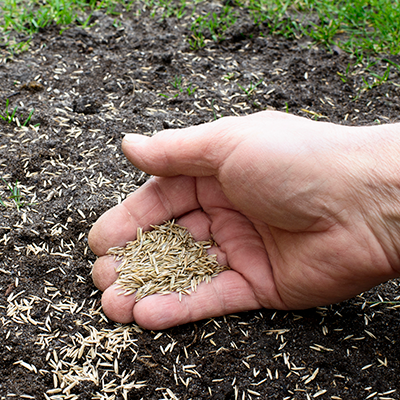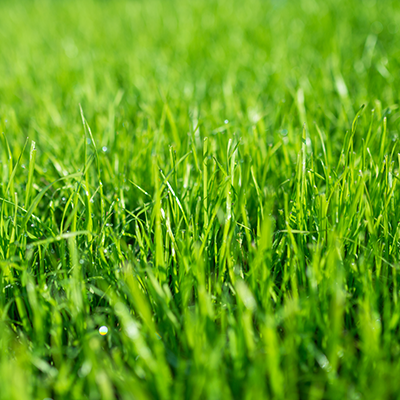Next time you’re standing around looking out one of your windows, take a look at your Indianapolis home. Look at the grass surrounding your property. Do you know what type of grass it is? Or has it just always been there. Most of us are not aware that there are a variety of different grass seeds grown, each suitable for different environments. But when it comes to renovating a lawn or having one installed, the type of grass seed you choose to grow is the most crucial component.
There are many different factors that come into play, including what region of the country you live in. Here in Indiana, we grow mostly cool-season turfs, grasses that grow best in cooler climates with milder summers and cooler winters. Read along and discover the different types of grass seed that are most commonly grown here in the Hoosier state and which one may be best suited for your Indianapolis property.
Factors To Consider When Deciding on Grass Seed
Aside from the region in which you reside, factors regarding your personal property are also important. When deciding which type of grass seed to plant, you want to determine the following:
- Amount of shade your yard receives
- Amount of rain you receive
- Amount of foot-traffic
- The specific look you are going for
- How much work is involved, and how much time do you want to invest
Different Types of Grasses: Warm-Season and Cool-Season
Grass falls into two categories, cool-season, and warm-season. Warm-season grasses include varieties such as St. Augustine, centipede, Bermudagrass, and zoysia. They tend to be thicker and are known for their lushness. They also grow best in warmer climates with hot summers and mild winters. Cool-season grasses include varieties such as Kentucky bluegrass, tall fescue, fine fescue, and ryegrass. These types of grass fare better in climates with milder summers and cooler winters. This is because they do not go dormant until temperatures reach below 45 degrees consistently.
Warm-season grasses start to go dormant when the temperatures outside reach 60 or below. Regardless of which type of grass you choose for your lawn, lawn care professionals recommend using a blend of different types. Doing so decreases the chance of attracting disease and annoying pests. By incorporating biodiversity, the health of your lawn improves.
As we mentioned earlier, cool-season grasses with a few warm-season blends mixed in work best in Indiana. Therefore, for this article, we focus on the most common cool-season grasses grown in Indianapolis.
Kentucky bluegrass
The most widely grown grass here in Indianapolis, Kentucky bluegrass is highly attractive. With its dark green leaves and soft texture, it grows quickly and recovers well from damage. It tolerates light shade to full sun and prefers well-drained soil. It handles heavy foot traffic well and is the perfect choice for athletic fields, schools, parks, or a home full of summer activity. Unfortunately, it is more susceptible to lawn disease and pests. To help control diseases, it is often mixed with ryegrass.
The Fescues
Fine Fescue
Fine fescues are great to use in those yards that are more challenging. If your yard has an abundance of shade or struggles with moisture retention or poor soil, fine fescue is perfect. This grass variety has thin leaves, is highly adaptable to all sorts of conditions, and doesn’t need a lot of attention. It’s often added to grass seed mixes because it tolerates drought and shade well, but fine-leaf fescues aren’t considered the most attractive.
Tall Fescue
Tall fescue is a popular turf seed used in the north due to its cold, heat, and extreme drought tolerance. It has wide, dark green grass blades that stay green throughout the winter. It is perfect for those lawns that experience heavy foot traffic, including athletic fields and golf courses. It is a rapid grower blocking sunlight from reaching those annoying weeds lurking in your yard. On the flip side, its rapid growth can require frequent mowing, something to consider if you want a maintenance-free yard. Tall fescue looks great when paired with zoysia or bermudagrass, giving your lawn a vibrant green color.
Ryegrass
Ryegrass is another drought-resistant turf with pale green leaves and a thin, fine texture. It shares fescue’s competitiveness and will quickly establish a new lawn while blocking out potential weed growth. This makes it a great grass seed for repairing and restoring thinning lawns. Ryegrass is commonly mixed with Kentucky bluegrass which takes longer to grow and acts as a sun umbrella protecting it from the full sun until it has completely sprouted. It is a hardy, low-maintenance grass that is insect and disease resistant. Unfortunately, it grows in clumps and can often appear patchy with bare spots that regularly need reseeding.
For Optimal Lawn Care, Contact the Professionals at Picasso Lawn and Landscape
Regardless of what type of turf you have, Picasso Lawn and Landscape will help create the perfect lawn for you. Need advice and information on which type of grass seed to use? Picasso has you covered. Our experts are trained and knowledgeable on the different types of grasses that grow here in Indianapolis. And for all your lawn care needs, we offer weed control and fertilization designed to give you the lush, green, weed-free lawn you’ve always wanted. Contact us to learn more today. Visit our website and fill out our quick and easy online form or give us a call at 317-253-5296.
For more information like the article above, check out our other monthly blog articles.
